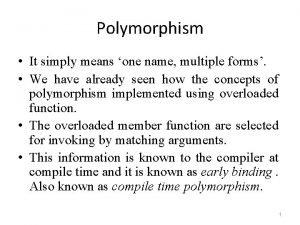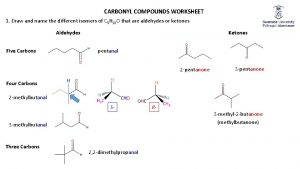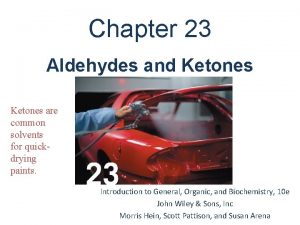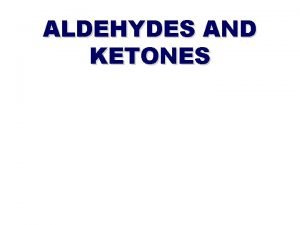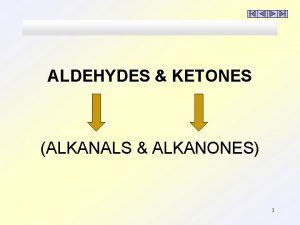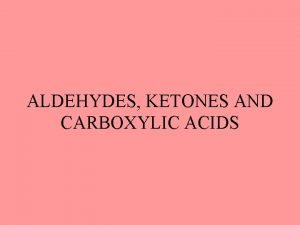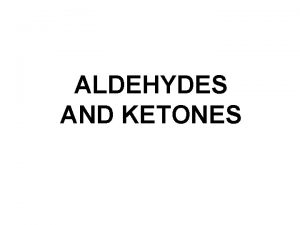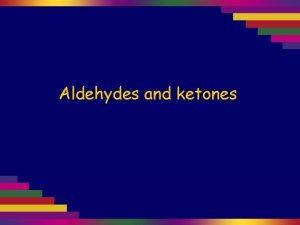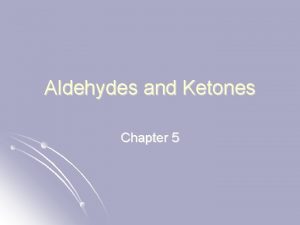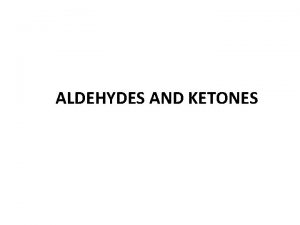UNITIII Ketosis Ketosis Ketosis simply means that ketones












- Slides: 12

UNITIII Ketosis

Ketosis �Ketosis simply means that ketones are present in body fluids in elevated concentrations �Ketone bodies are acetoacetic hydroxybutyric acid and acetone acid, beta- �Ketosis is frequently associated with ketoacidosis �Ketosis is a normal response to low glucose availability �Ketogenesis take pace in lever �Aetyl Co. A is precursor of ketone bodies

Mechanism of development �Occurs during fasting, starvation, restriction, prolonged exercise carbohydrate �Trace levels of ketones are always present in the blood �Increase when blood glucose reserves are low �Liver shifts from primarily metabolizing carbohydrates to metabolizing fatty acids

Mechanism of development…. . �When the liver rapidly metabolizes fatty acids into acetyl-Co. A, some acetyl-Co. A molecules can then be converted into ketone bodies �These ketone bodies can function as an energy source �The liver itself cannot utilize these molecules for energy, so the ketone bodies are released into the blood for use by peripheral tissues including the brain �Acetyl-Co. A can be metabolized through the TCA cycle in any cell

Mechanism of development…. . �It can also undergo ketogenesis in the mitochondria of liver cells �When glucose availability is low, oxaloacetate is diverted away from the TCA cycle and is instead used to produce glucose via gluconeogenesis �Excess of Acetyl-Co. A synthesize ketone bodies �Uncontrolled production of ketones leads to keosis


Biochemical alteration �Ketonemia- the presence of an abnormally high concentration of ketone bodies in the blood �Hypoglycemia- decrease in blood glucose level �Ketonuria- presence of ketone bodies in urine �Rothera's test- Detection of ketone bodies in urine

Types of ketosis �Alimentary ketosis �Fasting Ketosis �Diabetic Ketosis �Ketosis Associated with Pregnancy and Lactation Bovine ketosis- Cattle Pregnancy toxemia- Sheep �Postexercise Ketosis

Alimentary ketosis �Alimentary ketosis occurs when cattle have been fed spoiled silage that contains excessive amounts of butyric acid �Ketogenesis can occur from Volatie Fatty acid �Propionate is the major gluconeogenic precursor and is not an important precursor of ketones �Butyrate is converted to 3 -hydroxybutyrate by the rumen epithelium �Rumen epithelial cells possess high activities of butyryl. Co. A synthetase, which can convert butyrate to butyryl. Co. A

Fasting Ketosis �During fasting, hormonal changes occur that promote lipolysis �Plasma glucose (hypoglycemia) concentrations will decrease �Low plasma insulin concentrations high plasma glucagon concentrations �These hormonal changes will increase c. AMP concentrations in adipose cells, which leads to the activation of hormone sensitive lipase �Long chain fatty acid released from adipose tissue

Diabetic Ketosis �More frequently in dogs and cats than other domestic species � Diabetes is accompanied by hyperglycemia, whereas most other ketotic syndromes occurring in domestic animals are usually accompanied by normoglycemia or hypoglycemia �The ketonemia in diabetes is due to increased lipolysis in adipose plus accelerated hepatic gluconeogenesis

Post exercise ketosis �During exercise long chain fatty acid bodies is utilized by muscles �Ketone bodies formed from long chain fatty acid is utilized by muscle �Trained athlete have high activity of enzyme related to fatty acid and ketone bodies utilization �After exercise ketone bodies is still synthesizing which leads to accumulation of ketone bodies (Ketosis)
 One name many form is the concept of
One name many form is the concept of Gây tê cơ vuông thắt lưng
Gây tê cơ vuông thắt lưng Block nhĩ thất độ 2 type 1
Block nhĩ thất độ 2 type 1 Tìm vết của mặt phẳng
Tìm vết của mặt phẳng Sau thất bại ở hồ điển triệt
Sau thất bại ở hồ điển triệt Thơ thất ngôn tứ tuyệt đường luật
Thơ thất ngôn tứ tuyệt đường luật Hãy nói thật ít để làm được nhiều
Hãy nói thật ít để làm được nhiều Thơ thất ngôn tứ tuyệt đường luật
Thơ thất ngôn tứ tuyệt đường luật Tôn thất thuyết là ai
Tôn thất thuyết là ai Phân độ lown
Phân độ lown Chiến lược kinh doanh quốc tế của walmart
Chiến lược kinh doanh quốc tế của walmart Carbonyl compounds
Carbonyl compounds Chemical properties of ketones
Chemical properties of ketones
